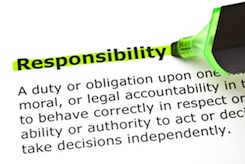 It’s not cheap to continually buy laundry detergent, stain removers and dryer sheets, but they’re necessary evils we encounter in daily life, right? But what if you could stop buying them by making your own laundry aids at home? Not only would you save a ton of money, but you’d also be able to control what chemicals come in contact with your family’s skin. These 21 blog entries tell you exactly what you need to do to prepare laundry detergent, stain removers and dryer sheets at home, so you never have to waste money on them at the store again.
It’s not cheap to continually buy laundry detergent, stain removers and dryer sheets, but they’re necessary evils we encounter in daily life, right? But what if you could stop buying them by making your own laundry aids at home? Not only would you save a ton of money, but you’d also be able to control what chemicals come in contact with your family’s skin. These 21 blog entries tell you exactly what you need to do to prepare laundry detergent, stain removers and dryer sheets at home, so you never have to waste money on them at the store again.
Detergent
Since the main ingredient in detergent is soap, this laundry aid is not only easy to assemble, but it’s also highly customizable to your favorite scents. By using your favorite bar of soap as the base or adding in a couple drops of essential oil, you can create your own unique laundry detergent. For other tips on how to mix up laundry detergent at home, check out these seven blog posts.
- Making Your Own Laundry Detergent Watch this video to learn how to mix up a batch of laundry detergent that costs you pennies per load.
- How to Make Your Own Laundry Detergent Want to save about $300 a year on detergent? This recipe will help.
- DIY—How to Make Your Own Laundry Detergent This recipe makes enough detergent to fill a five gallon bucket, meaning you won’t need any detergent for a long time.
- Laundry Detergent… Make Your Own! This blog post has a recipe that makes only three cups or 40 loads worth of detergent, which is perfect for someone who wants to test out making a small batch before committing to larger quantities.
- Make Your Own Cleaning Products and Save You’ll find a very basic detergent recipe on this blog entry, along with other cleaning product recipes.
- Make Your Own Laundry Detergent for Under $40! Make a year’s worth of laundry detergent using the recipe on this blog post.
- How to Make Homemade Liquid Laundry Detergent This recipe helps you make a liquid detergent that is similar to powdered detergent.
Stain Remover
Instead of running to the store the next time the kids come home with a stain, whip up a batch of your own stain remover – you probably already have everything you need around the house! The trick to treating stains is determining the type of stain it is and treating it as quickly as possible after it happens. To learn more about making your own stain removers, read these seven blog articles.
- DIY Laundry Spot Remover Mix up a batch of stain remover with the recipe on this post to keep your clothes stain free.
- DIY Laundry Stain Remover Using items that you already have on hand and the recipe from this blog, you can quickly mix up a small batch of stain remover.
- Ten Ways to Save on Laundry For this stain remover, all you need is to mix together a few ingredients in a spray bottle and then treat the stains.
- Simple Homemade Laundry Stain Remover (Natural and Safe Too) As noted in this post, it’s important to clean a stain as quickly as you can for best results.
- Clean Laundry—Miracle Stain Remover, Make Your Own Detergent and Dryer Balls In this post you’ll find solutions to soak stains in, so you never have to worry about pesky stains again.
- Homemade Stain Remover {Picture Tutorial} By using three items you probably already have at home, you can mix up a batch of stain remover and take an old toothbrush to any stains you may have.
- Three Natural Laundry Stain Removers You Can Make—Easily The power of lemon juice goes to work in one of these stain removers and will make everything smell fresh.
Dryer Sheets
You can use anything from a washcloth to strips of flannel fabric with a little fabric softener or essential oil to make your own dryer sheets. If you would like to do away with dryer sheets altogether, try using rubber dryer balls or making your own dryer balls from wool. These solutions and more are explored in the next seven blog entries.
- Make Your Own Dryer Sheets Cut up flannel fabric into strips and soak them in fabric softener to make your own dryer sheets.
- How to Make Your Own Dryer Sheets Add a few drops of an essential oil to a clean washcloth and add it to your dryer for an easy homemade dryer sheet.
- Make Your Own: Homemade Eco-Friendly Dryer Sheets Next time you need dryer sheets, try using cheap dish cloths cut into smaller pieces and soaked in vinegar and essential oil instead of store bought ones.
- Make Your Own Dryer Sheets! This super simple way to make your own dryer sheets uses muslin fabric and essential oil.
- Make Your Own {Reusable} Dryer Sheets! Soak wash cloths in fabric softener and let them dry to get reusable dryer sheets.
- Natural Dryer Sheets for Your Laundry! If you don’t like the smell of store bought dryer sheets and fabric softener, this all natural method of making your own dryer sheets might be just the solution you were looking for.
- Never Buy Dryer Sheets Again: Craft Your Own Money-Shrinking Dryer Balls These balls are made out of wool and will alleviate the need for dryer sheets altogether.








